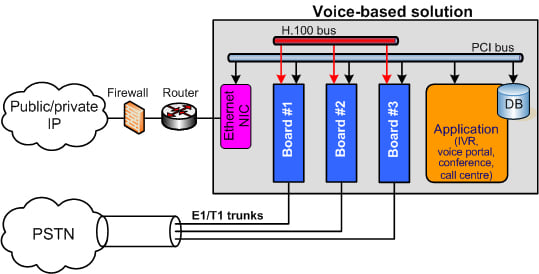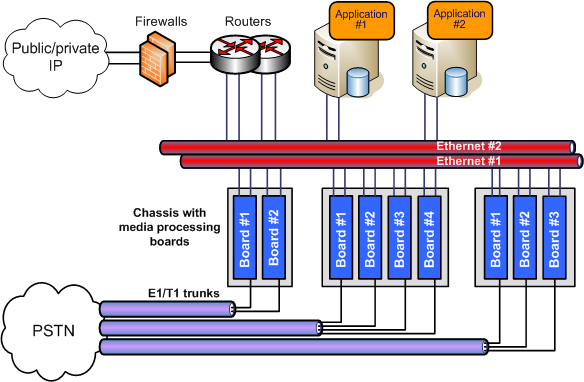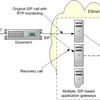This is part two of a set of articles describing the benefits of Aculab’s range of IP-centric Prosody X media processing boards for developers of large scale communications platforms.
In
part one, it was stated that there are many advantages in having IP at the core of the Prosody X media processing board, not least of which is the high channel counts made possible by such an architecture. But that is just one aspect…
Choosing IP connectivity enables a distributed architectureIn putting IP technology at the heart of the Prosody X design it is much simpler, due to the ubiquity of Ethernet in IT networks, to build multi-board, multi-chassis and multi-location systems using Prosody X. So if the high channel counts of a single Prosody X board are not enough, then it is easy to build multi-board systems.
The traditional way
Before VoIP entered the telephony world, we depended on TDM technology and an array of disparate CAS and CCS type PSTN protocols, and most of the voice-based solutions had a common architecture, simply described as a host server with telephony boards. Voicemail, interactive voice response (IVR), call centre or fax broadcast solutions had a common architecture with all parts integrated in one physical unit.

Figure 1 - traditional voice-based solution architecture
The interconnection between the cards was done via the proprietary telephony bus H.100/H.110, while the high level application controlled the boards using the PCI bus that is present in the chassis or the computer server.
Although achieving the main objective of delivering a defined functionality set within a reasonable cost, employing the traditional architecture creates a significant headache for the developers when additional sophistication from such a solution is required:
- Scalability – difficult to add capacity with minimal added cost
- Redundancy or adding fault tolerance – technically cumbersome to achieve and almost doubles the CAPEX
Remote system management, hitless software upgrades, and hardware maintenance in the system without interrupting the service, also add to the comprehensive list of system requirements that lead to increased architectural complexity and spirals the cost of solutions utilising the traditional architecture.
A better way
What is needed is the implementation of a distributed architecture. A distributed architecture offers scalability, redundancy, remote management and high service continuity at a minimal added cost. A sample architecture is shown below.

Figure 2 - Distributed voice-based solutions architecture
In choosing IP connectivity at the core of Prosody X, we enabled developers to utilise the inherent strength of IP to allow remote devices to communicate distantly and operate as if they were all present locally. So if a single Prosody X board does not offer enough processing power, then adding further media processing resources is a very simple task. Or if you wish to separate the media processing resources (DSP boards) into physically separate servers for resilience/fault tolerance, then this too is easy to achieve as the servers require just an IP connection between them.
Many of our customers have taken advantage of this approach to build large scale systems, such as voice conferencing platforms of fax servers supporting thousands of channels of capacity. Others have used the ability to physically separate the resource boards to build fully redundant mission critical communications platforms. Whatever your requirements of a media processing platform, Prosody X offers a flexible, cost-efficient and scalable solution.







 Technorati
Technorati Del.icio.us
Del.icio.us Slashdot
Slashdot Digg
Digg twitter
twitter































Leave a comment